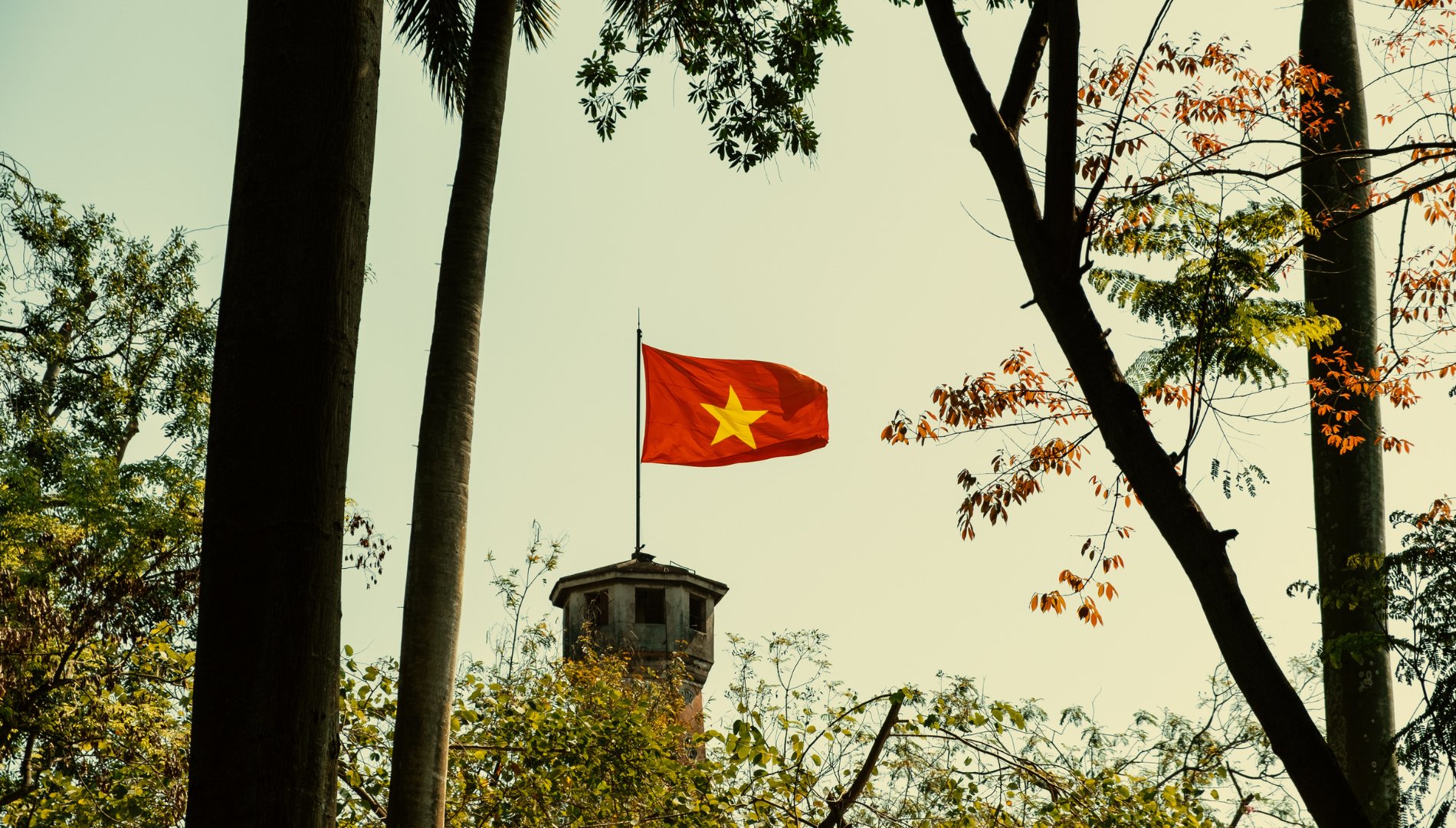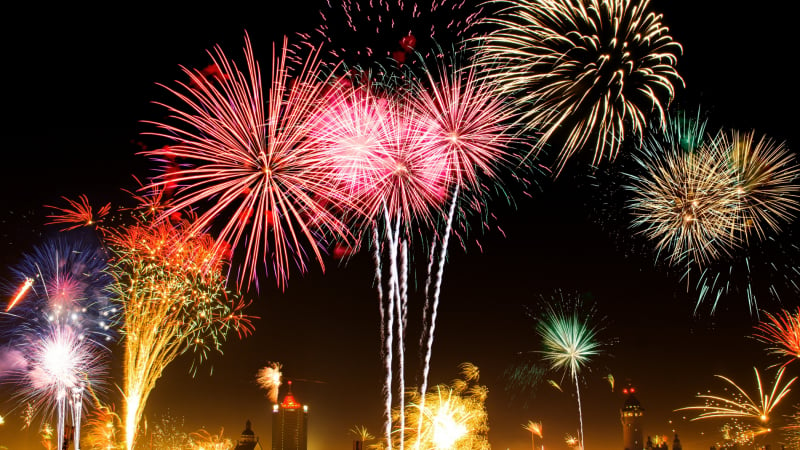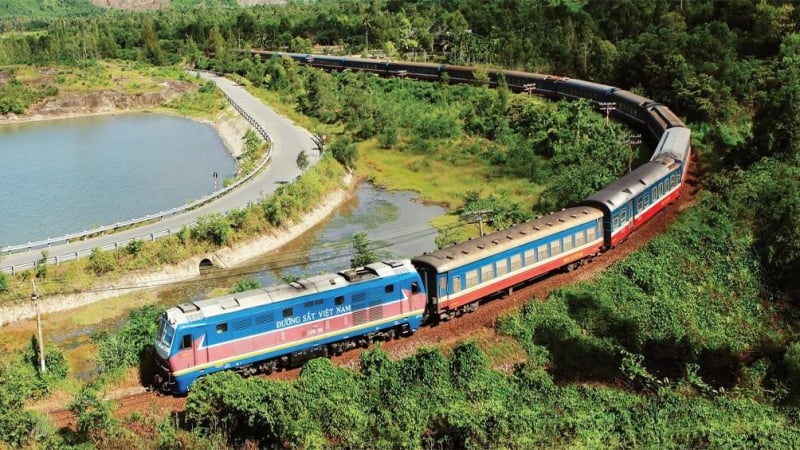Half a century has passed since the country was completely liberated and reunited. During those 50 years, the image of the red flag with a yellow star proudly flying in the sky of Vietnam has become a sacred symbol of peace, of the strong aspiration to rise up, of the spirit of solidarity and the indomitable will of an entire nation.
It is even more proud and moving that, as we are joyfully welcoming the golden anniversary - 50 years of the Liberation of the South and National Reunification (April 30, 1975 - April 30, 2025), a strong wave of patriotism and national pride is surging strongly in the hearts of every Vietnamese person, especially among the youth, the future owners of the country. With passionate hearts, full of ambition and deep gratitude for the great contributions and noble sacrifices of our ancestors, young people have been and are coming to historical sites, the silent "witnesses" of a period of arduous struggle to directly feel and listen to the heroic stories of the past, thereby further appreciating the value of independence, freedom and unity that we are enjoying today.
Hanoi Flag Tower - a proud "red address" in the heart of the capital
Standing tall on the historic Dien Bien Phu street, in Ba Dinh district, the heart of Hanoi capital, the Hanoi Flag Tower stands tall, a silent yet majestic witness to the ups and downs of history. The Hanoi Flag Tower, also known as the Hanoi Ky Dai, with an impressive total height of 41.4 meters, including the flagpole, easily attracts all eyes from afar. The structure of the flagpole includes three square bases, stacked firmly on top of each other, and a towering tower above.

In 1954, when the national flag was once again planted on top of the flagpole, it was also the time when the resistance war against French colonialism was completely victorious.
In particular, the Vietnamese national flag, the sacred symbol of the Fatherland, is solemnly hung on top of the flagpole, with an area of up to 24 square meters (4 meters wide and 6 meters long), sewn with high-quality satin fabric. The corners of the flag are reinforced with meticulous diamond-shaped ceiling technique, helping the flag to be durable against strong winds. The image of the red flag with a yellow star flying proudly on top of the flagpole, standing out against the vast blue sky, not only has a sacred and heroic meaning but also evokes in each person a deep pride in the Fatherland and the glorious history of the nation.
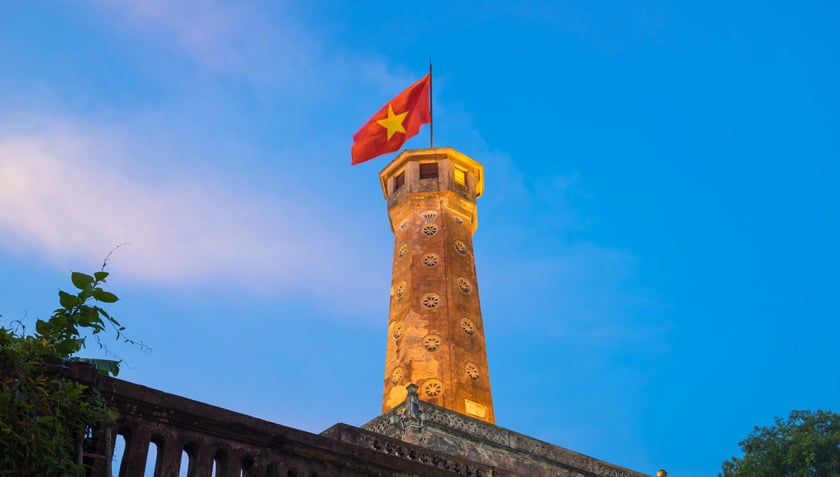
Lung Cu Flagpole - Sacred place at the northernmost point of the Fatherland
Proudly standing on the top of Lung Cu, a sacred mountain shaped like a winding dragon, in Lung Cu commune, Dong Van district, Ha Giang province, about 154km north of Ha Giang city center, Lung Cu National Flagpole is not only an architectural work, but also a sacred symbol, a mark affirming the sacred territorial sovereignty of the Fatherland Vietnam at the northernmost point.

Towering among the clouds, Lung Cu flagpole is not only the pride of Ha Giang but also the pride of the whole nation, closely associated with the name, land and people of the borderland of the Fatherland.
Built according to the architectural model of Hanoi Flag Tower, Lung Cu Flag Tower is majestic with a total height of 34.85 meters. On top of the tower, a red flag with a yellow star measuring 54 square meters flutters, symbolizing the unity and harmony of 54 ethnic groups living together under the roof of Vietnam. The tower is designed in a sturdy octagonal shape, each side is delicately carved with 8 ancient bronze drums and 8 green stone reliefs, vividly recreating the heroic historical periods of the country, as well as depicting the unique cultural features and customs of ethnic minorities living in Ha Giang.
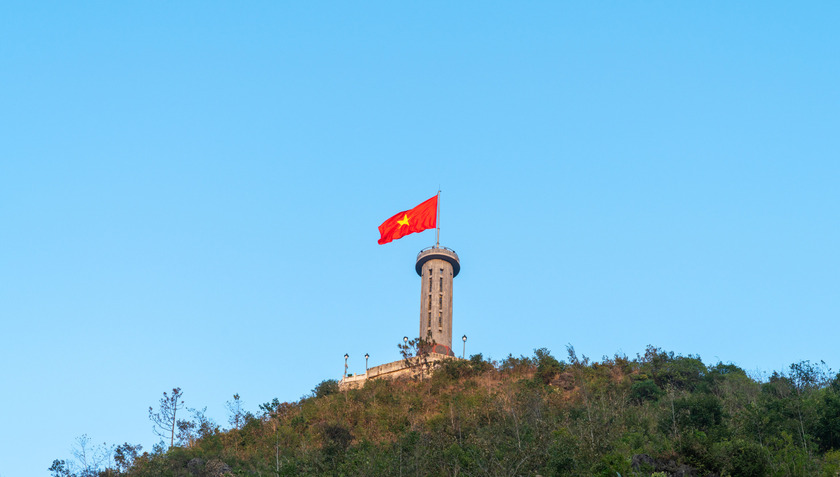
The moment of standing under the national flag fluttering on Lung Cu peak, breathing in the fresh air of the rocky plateau, and looking out over the majestic scenery of the mountains, is a sacred pride for every Vietnamese. It is not just a simple "check-in" act, but also a deep gratitude to the heroic martyrs who fell for the independence and freedom of the Fatherland.
Conquering the Vietnamese flag on the "roof of Indochina"
Reigning proudly on the majestic Fansipan peak, the "roof of Indochina" with an altitude of 3,143 meters above sea level, the Fansipan Flagpole was inaugurated in January 2017 as a special symbol, a solemn tribute to the beauty and spirit of Vietnam. Towering among the clouds, the flagpole has an impressive height of 25 meters, crafted from solid monolithic blocks of green stone, defying all the harshness of the highland weather.

Admire the tallest flagpole in Indochina
The proud national flag flying on the top of Fansipan was custom-made with dimensions of 4.5 meters in length and 3 meters in width, using a special material that can withstand all harsh weather conditions, regardless of the scorching sun, the showers or the strong gusts of wind on the peak. The image of the red flag with yellow star flying in the wind, in the mist, the echo of the National Anthem amidst the clouds and mountain winds creates a strong, sacred emotion, deeply etching an indelible mark in the soul of every person who witnesses this sacred symbol on the top of the high mountain.
The national flag flies on top of Ba Den Mountain
Standing tall in the Southeast region, Ba Den Mountain is not only a majestic natural mountain but also a famous sacred place, associated with the hundreds of years old Ba Pagoda system, where the legend of Linh Son Thanh Mau solemnly resides halfway up the mountain. Over time, this place not only attracts tourists from all over to make pilgrimages, to find spiritual roots, but also becomes a fascinating "virtual living" destination for many young people.
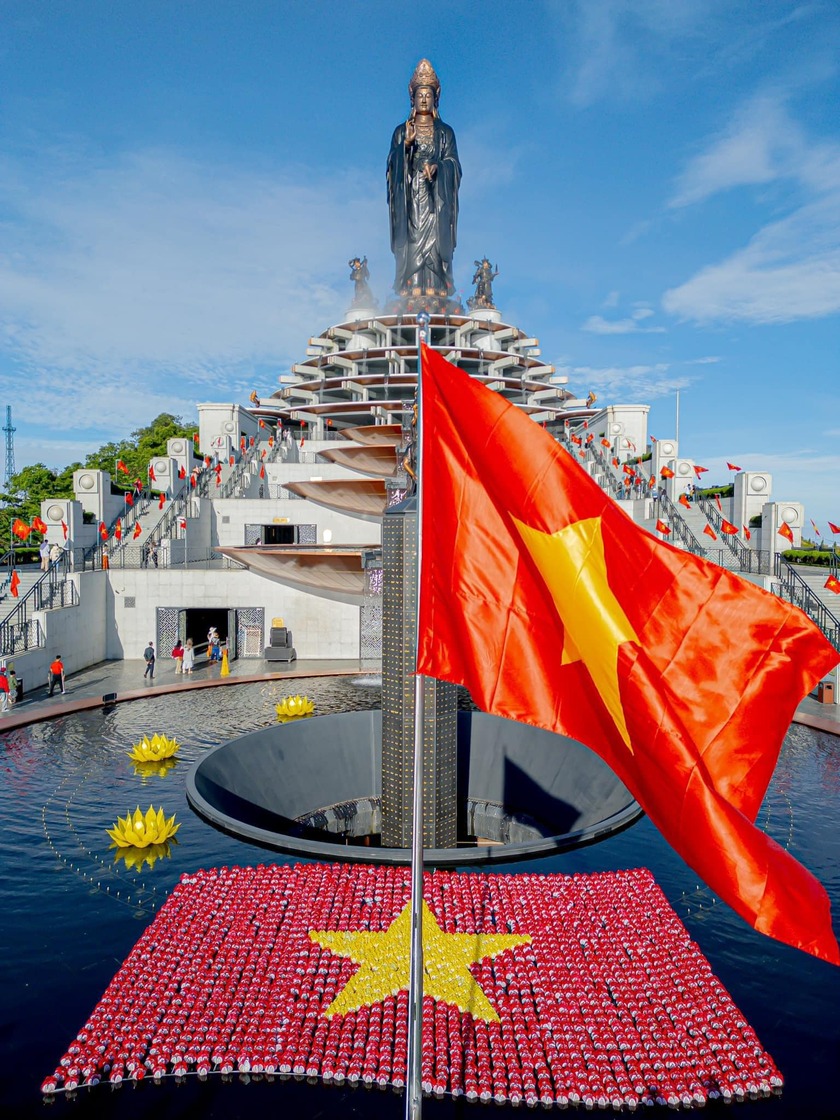
The giant red flag with yellow star made up of thousands of flower lanterns has become a highlight of national pride on the highest mountain in the South.
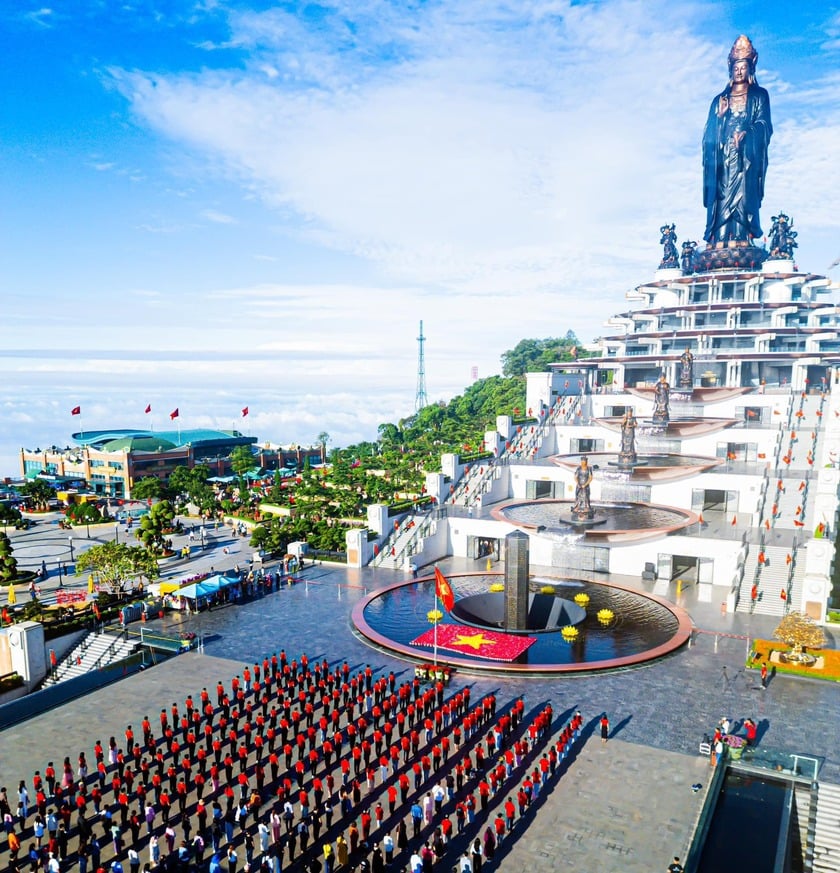
On the top of Ba Den Mountain, in the vast, majestic and sacred space, the image of the bright red national flag with a bright yellow star fluttering in the wind becomes more meaningful than ever. At this height, the flag is not only a symbol of national sovereignty but also a testament to the spiritual strength, indomitable will and national pride of the Vietnamese people. When looking at the flag fluttering in the clouds, blending with the majestic natural scenery and magnificent spiritual works, everyone feels a deep connection with the country, with history and with sacred values.






